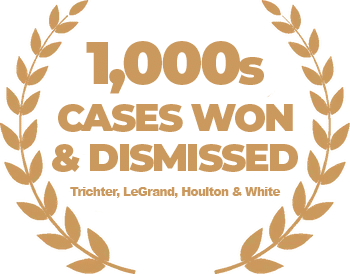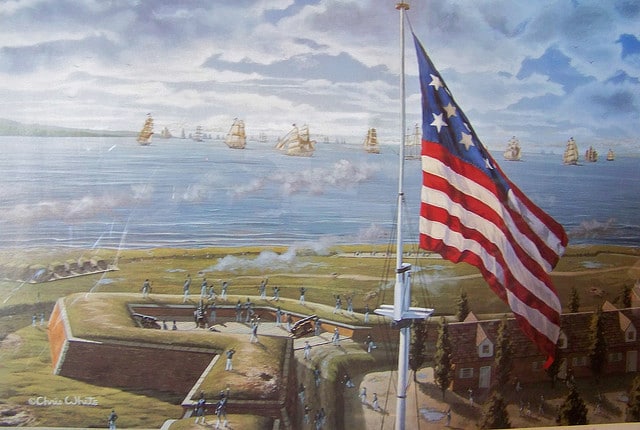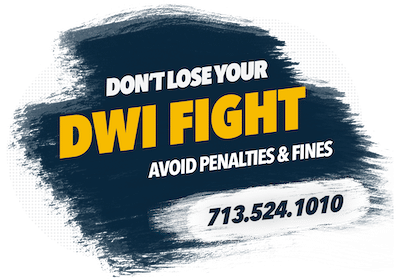
- HOME
- DWI
- What Is A DWI Specialist
- Arrested For DWI?
- DWI 2nd Offense
- DWI 3rd Offense
- Penalties For DWI
- Prior DWI Convictions
- DWI (Driving While Intoxicated)
- DUI (Driving Under The Influence)
- Drunk Driving Lawyer
- .08 Alcohol Concentration
- Felony DWI
- DWI with Child
- Intoxication Assault
- Intoxication Manslaughter
- DWI with CDL
- DWI Expunction
- Drivers License Suspension & ALR
- Impaired Driving vs Drunk Driving
- DWI & Gun Ownership
- Public Intoxication
- BWI (Boating While Intoxicated)
- FWI (Flying While Intoxicated)
- Drug Possession

- AVIATION
- REVIEWS
- PAYMENTS
- INFO
- ABOUT
- About Us
- DWI Specialist J. Gary Trichter
- DWI Lawyer Leslie LeGrand
- DWI Lawyer Aaron White
- DWI Lawyer Gregory Houlton
- Of Counsel Attorneys
- CONTACT
- HOME
- DWI
- What Is A DWI Specialist
- Arrested For DWI?
- DWI 2nd Offense
- DWI 3rd Offense
- Penalties For DWI
- Prior DWI Convictions
- DWI (Driving While Intoxicated)
- DUI (Driving Under The Influence)
- Drunk Driving Lawyer
- .08 Alcohol Concentration
- Felony DWI
- DWI with Child
- Intoxication Assault
- Intoxication Manslaughter
- DWI with CDL
- DWI Expunction
- Drivers License Suspension & ALR
- Impaired Driving vs Drunk Driving
- DWI & Gun Ownership
- Public Intoxication
- BWI (Boating While Intoxicated)
- FWI (Flying While Intoxicated)
- Drug Possession
- AVIATION
- REVIEWS
- PAYMENTS
- INFO
- ABOUT
- About Us
- DWI Specialist J. Gary Trichter
- DWI Lawyer Leslie LeGrand
- DWI Lawyer Aaron White
- DWI Lawyer Gregory Houlton
- Of Counsel Attorneys
- CONTACT
THE REAL STORY BEHIND THE STAR SPANGLED BANNER

Originally published online in The Voice Online, June 2, 2012
– By J. Gary Trichter
As I reflect on the events of the last two years, I must say first what a privilege it has been to be your President.
I have not been humbled by the the honor, but rather, inspired by it.
The Presidency and Providence have taught me much about others and about being human.
My term has been no more and no less of a success than those that preceded me—we all build on the accomplishments of those who came first just as those who follow will build on what we have done.
On the plus side, the Association and I were blessed with an outstanding Executive Director and Assistant Executive Director, Joseph Martinez and Melissa Schank, as well as an outstanding home office staff.
The Association and I also had the wisdom of an excellent Executive Committee: Lydia Clay-Jackson, Bobby Mims, Emmett Harris, Sam Bassett, John Convery, Scrappy Holmes, Stan Schneider, John Ackerman, Troy McKinney, George Scharmen, Mike McCollum, and Greg Westfall.
In regard to the coming years, I attest to you that all that your officers are righteous people who I know to have your best interest at heart, and that I have no fear of passing on power to them.
That said, however, they can not run this Association without your consent, trust, confidence, and participation—please step up and give it to them! Lydia will be a great President if you will help her help you!
Another plus for me was working with Court of Criminal Appeals Judge Barbara Hervey on our grant issues and State Bar President Buck Files on State Bar issues.
Both of these good people deserve our thanks and support for their volunteer efforts to enhance our educational opportunities.
Together, they have silently added a great measure of professional advancement to TCDLA.
On the negative side, I have but one disappointment, and that is simply that the one-year President’s term flew by.
Notwithstanding, the year was filled with lots of activity and accomplishment.
One such accomplishment was the initiation of inspirational readers at the beginning of our board meetings.
Some moved us to tears while others taught us about courage we could immediately bring into the courtroom.
As a lover of our American History, I strongly believe that “We the People,” as a Nation, can find more that binds us together than that which separates us if we simply do not forget our history.
To this end, our reading of the Declaration of Independence ought be embraced by you all this July 3rd and a special thanks given to board member Robb Fickman for his leadership in this good will patriotic endeavor.
Let me now end with what I hope will be an inspirational story about “The Star Spangled Banner”—maybe one that will motivate you all to sing its words the next time you hear it or to have more courage in court.
I have always been bothered that so many don’t sing our national anthem, and surmised that even though the words tell a story of a battle, that more needs to be told of September 12–14, 1814, in Chesapeake Bay. And so:
The War of 1812, sometimes called “the Second War of Independence,” was the only one where the United States was invaded by a foreign power.
We declared war against Great Britain because it regularly kidnapped American sailors and disrupted American trade by blockade.
In April 1814, England’s war with France ended at Waterloo with Lord Wellington’s crack troops, led by Major General Robert Ross, decisively defeating Napoleon.
This resulted in those same crack troops, “Wellington’s Invincibles,” and General Ross being redeployed against our country.
It came at a bad time because we were loosing the war; Chicago, Detroit, and much of the states of Maine and New York were under British control while the Indians, supplied with British arms, were waging war on the Western frontiers.
Massachusetts was even sponsoring a plan to secede from the United States so it could pursue a separate peace with England.
Landing near the capital, the British not only marched on Washington, D.C., but also sacked and burned it after defeating an American army twice its size. President James Madison, “the Father of our Bill of Rights,” barely escaped with his wife, Dolly.
It was Dolly who refused to leave until she could rescue priceless historical treasures—e.g., a portrait of President Washington.
Notwithstanding that our Capitol had been taken, it was not a military target of any real consequence.
That honor fell to nearby Baltimore, Maryland, which was the third-largest city.
This was a great seaport because of Chesapeake Bay; it was a large center of commerce of the young nation.
Take Baltimore and the United States might fall, so thought the British!
Accordingly, the British plan was to attack and capture Baltimore, which had openly declared itself hostile to England.
It was also to punish the city, nicknamed a “nest of pirates” because its schooners had retaliated against the British by seizing its ships and cargoes. Indeed, the Baltimore fleet was responsible for 30 percent of all British ships captured.
The plan was to do so by land and by sea. Here, the invading navy, commanded by Admiral Alexander Cochrane, was composed of troop transports, supply ships, and 16 warships, including bomb-ketches: ships that fired mortars.
These were superior weapons that allowed the dropping of 11-inch and 13-inch bombshells on targets two miles away with near perfect precision.
The bombs were launched with one-pound bags of powder.
Interestingly, each bomb had a timing fuse that, depending on its length, would explode the instant it hit its target (if perfect length), after hitting the target (if too long), or would burst in air (if too short).
The British rockets had a range of one and three quarters mile.
On the other hand, the Baltimore city fathers, anticipating a possible attack, in the summer of 1813 readied an existing military emplacement that guarded both the city and the port.
A large entrenchment was dug along the city outskirts, gunboat barges were built, the militia drilled, and improvements were made to brick star-shaped Fort McHenry: mounting a battery of 32-pound cannons with a range of a mile and and a half at the bay edge, cannon at Patapsco River, making hot-shot furnaces, and quartering a force of 1000 soldiers commanded by Major George Armistead.
It was during this same period, Major Armistead commissioned Mary Pickersgill to make two flags for the fort—a garrison flag 30 x 42 feet and a flag for inclement weather, a storm flag, 17 x 25 feet.
Each flag was to have 15 stars and 15 broad stripes.
The flag task was completed in seven weeks at a cost of $405.90 for the large flag and $168.54 for the smaller one, a sum that was more than most Baltimoreans made in a year.
On the morning of September 12, the British landed 5,000-plus troops at North Point and marched to attack the city.
Arriving at Hampstead Hill, they found their path blocked by 12,000 determined American Militia.
This was not an unexpected find for the invaders because it had been planned for their navy to subdue Fort McHenry, then to sail into the harbor and commence firing on Baltimore, causing panic and, hopefully, a retreat of the American forces.
Accordingly, the invading army just waited on their navy to fulfill their plan.
Regrettably for General Ross, while awaiting the bombardment, an American sharpshooter shot him right off his white horse, causing a great loss of morale.
With the first light of the 13th, about 6:30 a.m., the British fleet opened fire on Fort McHenry.
The battle commenced in a heavy rainstorm, which caused the fort to fly its smaller bad-weather flag.
Armistead’s cannon, being too light to reach the warships anchored two miles away, were useless and rendered the garrison totally defenseless, absent the ships moving closer.
For the next 25 hours, warships continuously rained rockets, shells, and bombs on the fort—some 1,800 rockets were launched at Armistead and his 1,000 brave defenders—which is over one bomb, shell, or rocket per minute.
Hour after hour, the American force took shelter and watched and waited.
Many took shelter at the outside back walls of the fort as 186-pound bombs and rockets fell into the walls.
At night, the rockets and exploding bombs lit up the sky and smoke obscured the fort in a dark cloud.
Rockets whisked through air and burst into flames on impact.The sound was deafening and never stopped during the attack, and yet, the defensive force endured and endured.
This was all happening while under the waving storm flag—sometimes visible and sometimes not.
Weeks before, as the British were leaving Washington in flames, they seized Dr. William Beanes as it was charged he was responsible for the arrests of British soldiers leaving the capital.
He was imprisoned on a British warship.
This doctor was important enough that President Madison sent a 35-year-old lawyer and poet, Frances Scott Key, and Col. John S. Skinner to negotiate a prisoner of war release.
The two sailed out to the British fleet on September 3rd and were successful in obtaining Dr. Beanes’ release—except, because of what they saw and heard about the British war plans, all three Americans were detained on board an enemy sloop, at least until after the city had fallen.
Hour after hour during the day the three Americans watched in frustration as they witnessed the power of the British fleet assaulting their homeland.
All night, they watched the mortars lob in bombs, their lit fuses leaving a trail of sparks.
They also saw rockets and explosions light up the sky—and on occasion, when the smoke was thinned by the wind, they saw the fort’s storm flag defiantly flying above the defenders.
The cannon, mortar, and rocket fire noise made it impossible to sleep.
And then, at 7:30 a.m. on September 14, the bombardment stopped. Key, Skinner, and Beanes knew of the British plan to attack Baltimore by land, too, and feared the worst—they had no way of knowing the truth.
They had no way of knowing that the British fleet had run out of ammunition, that Ross had been killed, and that the British army advance had stalled.
And then during the misty and drizzly dawn, they saw it!
No, they did not see the storm flag; they saw the much larger garrison flag waving defiantly as the British fleet readied to sail off.
Armistead had ordered it raised when he realized the battle had been won.
His troops celebrated the victory by firing guns and playing “Yankee Doodle Dandy.” Proudly waving, the large stars and bars were visible from eight miles away—visible to the three Americans, Key, Skinner, and Beanes, who were overcome with joy.
Of course, seeing the star spangled banner and knowing the British had lost, Key was irresistibly inspired to write down what he felt and he did so on an envelope.
Armistead lost only 4 defenders and had 24 wounded.
The British only had one ship hit and only one sailor was wounded.
Key wrote a four-stanza poem telling the story of the battle, which told of the pride of a brave, free, and God-loving people that call this country home.
In it he told a story of the pride of a country whose motto is “In God is our trust,” and of a people who would not only unite to fight for freedom, but also to keep it.
Key called the poem “The Defence of Fort McHenry.” Put to the British melody of “Anacreon in Heaven,” the poem became our national anthem in 1931.
Many of us know the words of the first stanza because it is the one we regularly hear, but the other three complete the battle as witnessed by Key.
The garrison flag is now on display at the Smithsonian Institution’s National Museum of American History.
Sadly, the fate of the storm flag is not known.
As Americans, we have had many inspirational documents, events, and leaders to excite our patriotic spirit: the Declaration of Independence, the Gettysburg Address, and Thomas Jefferson just to name a few.
An inspired person is a stronger person.
An inspired association is a powerful association. An inspired association of lawyers is battle weapon for freedom and justice.
TCDLA is that weapon!
Together, we police the police.
Together, we are the check and the balance on the conscious of the our country.
Together, we are guardians of our Bill of Rights!
That said, I have been inspired by so many of you.
Ours is an Association of heroes.
It has been my blessing to be your leader during my terms of office. For this, I thank you!
J. Gary Trichter
Your President
Oh, say can you see by the dawn’s early light
What so proudly we hailed at the twilight’s last gleaming?
Whose broad stripes and bright stars thru the perilous fight,
O’er the ramparts we watched were so gallantly streaming?
And the rocket’s red glare, the bombs bursting in air,
Gave proof through the night that our flag was still there.
Oh, say does that star-spangled banner yet wave
O’er the land of the free and the home of the brave?On the shore, dimly seen through the mists of the deep,
Where the foe’s haughty host in dread silence reposes,
What is that which the breeze, o’er the towering steep,
As it fitfully blows, half conceals, half discloses?
Now it catches the gleam of the morning’s first beam,
In full glory reflected now shines in the stream:
’Tis the star-spangled banner! Oh long may it wave
O’er the land of the free and the home of the brave!And where is that band who so vauntingly swore
That the havoc of war and the battle’s confusion,
A home and a country should leave us no more!
Their blood has washed out their foul footsteps’ pollution.
No refuge could save the hireling and slave
From the terror of flight, or the gloom of the grave:
And the star-spangled banner in triumph doth wave
O’er the land of the free and the home of the brave!Oh! thus be it ever, when freemen shall stand
Between their loved home and the war’s desolation!
Blest with victory and peace, may the heav’n rescued land
Praise the Power that hath made and preserved us a nation.
Then conquer we must, when our cause it is just,
And this be our motto: “In God is our trust.”
And the star-spangled banner in triumph shall wave
O’er the land of the free and the home of the brave!
TELL US ABOUT YOUR CASE
Form Submissions have a fast response time. Request your free consultation to discuss your case with one of our attorneys over the phone. The use of this form does not establish an attorney-client relationship.
The information on this website is for general information purposes only. Nothing on this site should be taken as legal advice for any individual case or situation. This information is not intended to create, and receipt or viewing does not constitute, an attorney-client relationship.
